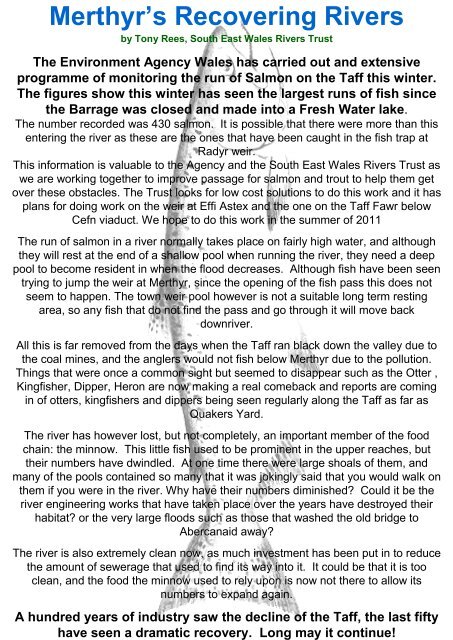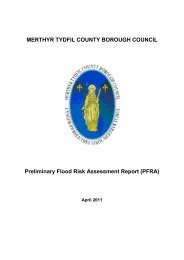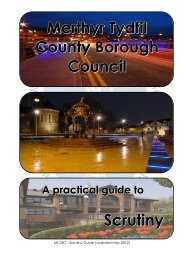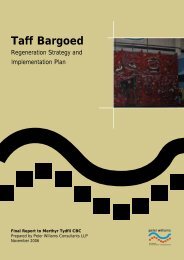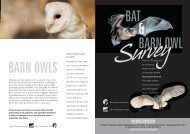Biodiversity Newsletter Winter 2011 - Merthyr Tydfil County Borough ...
Biodiversity Newsletter Winter 2011 - Merthyr Tydfil County Borough ...
Biodiversity Newsletter Winter 2011 - Merthyr Tydfil County Borough ...
You also want an ePaper? Increase the reach of your titles
YUMPU automatically turns print PDFs into web optimized ePapers that Google loves.
A hundred years of industry saw the decline of the Taff, the last fifty<br />
have seen a dramatic recovery. Long may it continue!<br />
<strong>Merthyr</strong>’s Recovering Rivers<br />
by Tony Rees, South East Wales Rivers Trust<br />
The Environment Agency Wales has carried out and extensive<br />
programme of monitoring the run of Salmon on the Taff this winter.<br />
The figures show this winter has seen the largest runs of fish since<br />
the Barrage was closed and made into a Fresh Water lake.<br />
The number recorded was 430 salmon. It is possible that there were more than this<br />
entering the river as these are the ones that have been caught in the fish trap at<br />
Radyr weir.<br />
This information is valuable to the Agency and the South East Wales Rivers Trust as<br />
we are working together to improve passage for salmon and trout to help them get<br />
over these obstacles. The Trust looks for low cost solutions to do this work and it has<br />
plans for doing work on the weir at Effi Astex and the one on the Taff Fawr below<br />
Cefn viaduct. We hope to do this work in the summer of <strong>2011</strong><br />
The run of salmon in a river normally takes place on fairly high water, and although<br />
they will rest at the end of a shallow pool when running the river, they need a deep<br />
pool to become resident in when the flood decreases. Although fish have been seen<br />
trying to jump the weir at <strong>Merthyr</strong>, since the opening of the fish pass this does not<br />
seem to happen. The town weir pool however is not a suitable long term resting<br />
area, so any fish that do not find the pass and go through it will move back<br />
downriver.<br />
All this is far removed from the days when the Taff ran black down the valley due to<br />
the coal mines, and the anglers would not fish below <strong>Merthyr</strong> due to the pollution.<br />
Things that were once a common sight but seemed to disappear such as the Otter ,<br />
Kingfisher, Dipper, Heron are now making a real comeback and reports are coming<br />
in of otters, kingfishers and dippers being seen regularly along the Taff as far as<br />
Quakers Yard.<br />
The river has however lost, but not completely, an important member of the food<br />
chain: the minnow. This little fish used to be prominent in the upper reaches, but<br />
their numbers have dwindled. At one time there were large shoals of them, and<br />
many of the pools contained so many that it was jokingly said that you would walk on<br />
them if you were in the river. Why have their numbers diminished Could it be the<br />
river engineering works that have taken place over the years have destroyed their<br />
habitat or the very large floods such as those that washed the old bridge to<br />
Abercanaid away<br />
The river is also extremely clean now, as much investment has been put in to reduce<br />
the amount of sewerage that used to find its way into it. It could be that it is too<br />
clean, and the food the minnow used to rely upon is now not there to allow its<br />
numbers to expand again.


